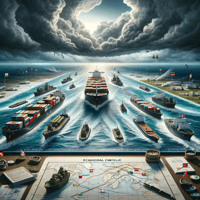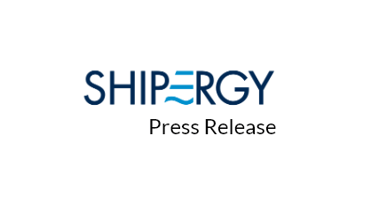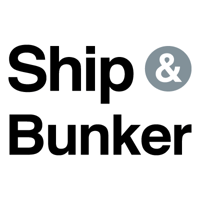It cannot have escaped your notice that there are strange and worrying things afoot in the...
Shipping’s ETS credit crunch
It is May 2025.
Shipping has been engaged in the European ETS for 17 Months. A pleasant meeting between the credit manager of a bunker company and a shipowner turns tense when the ship owner is asked: “how are you managing your EUA exposure in time for surrender in September?”. The response is worryingly woolly and noncommittal. As a result of this meeting, the supplier cancels its credit line as a result of concerns around its client’s liquidity.
Might this scenario be coming to a board room near you, soon? Well, we all know that bunkering has been no stranger to huge, industry-changing oscillations and we all can recollect a few of late: MFM usage, SECAs and the most notable of course being IMO2020. Is the new EU carbon regulation a new added norm in the current landscape? It certainly seems so.
Arguably, whilst perhaps not as significant as was IMO2020 right now, the resolutions we have seen in Europe about the expansion of the EU’s Emissions Trading Scheme (ETS) to cover shipping, could well become even more seismically important. If you've not been paying attention to what’s been happening, the upshot is that, from January 2024, all vessels over 5,000 gross tonnes will have to report their “tank to wake” emissions. That is to say, the aggregate total of Greenhouse Gases (GHG) produced in the process of burning bunker fuel. In fact, total GHG emissions is calculated as the sum of CO2, CH4 and N2O emissions, however only CO2 is going to be counted for the first two years of the application, as carbon emissions. Shipping companies will be required to “surrender” allowances equivalent to 40% of emissions reported for 2024; 70% for 2025 and 100% for 2026 onwards. It will also expand in scope after 2025 to incorporate emissions of nitrous oxides and methane as well, and pre-agreed reduction to the threshold will happen gradually by 2030 as an effort to decarbonise the industry.
Shipergy’s team (along with most stakeholders in shipping, we assume) raised an eyebrow when we read what it was announced. You cannot help but wonder how it is supposed to work.
Straight away, the credit implications loom large out of the mist of uncertainty and what seemed at first glance a relatively simple thing suddenly becomes quite difficult. The first question is - who bears the cost? It seems that the general intention for the new rules is for the shipowner to be the one paying the gas bill. The rules also state that any other organisation or person, such as the manager or the bareboat charterer, (but not the spot or time charterer) that has assumed the responsibility for the operation of the ship from the shipowner, is the one responsible, and the one who would or should hold the DOC (Document of Compliance) which would allow the vessel to sail in EU waters. The second question is - when do you bear the cost? Understanding the significance of credit in shipping means it is easy to then realise the importance of price-locking flexibility today with payment deferred until fixture revenue arrives.
We will see some choosing not to pay. Those pointing to a EU embargo for the specific vessel or owner in the event of non-payment are probably right but if this scheme spreads with some joined-up thinking, like the SECA idea did, to the rest of the world, it becomes a bigger deterrent.
Theoretically, shipowners can and will of course just factor the emissions payments into their TCE rates directly or indirectly and the end result is that it will simplistically cost more to ship things by sea in the vast majority of cases. Of course, higher TCEs aren't good for everyone and there are ramifications to this from a credit point of view. More pointedly, will traditional owners with fleets of up to five vessels be able to afford the extra complexity that the EU ETS trading scheme and the FuelEU Maritime bring to the table? Changes in trading patterns will of course happen and in this period of fracturuing market dynamics, we could again see a split in the market between older and more expensive-to-comply vessels moving to non-EU trading routes by offering lower fixture rates and their cheaper, newer but (we assume) high TCE rate contemporaries, for a while anyway becoming the optimal solution for EU-linked voyages.
Shipowners now have even less incentive to stick with older vessels and we can potentially anticipate a scrapping boom over the next few years as older vessels go for scrap to be recycled. Simple Economics 101 suggests this may put scrapping premiums under pressure so this is something to keep an eye on too. Whereas twenty years wasnt that old for a bulker or tanker a generation ago, it is positively geriatric now and - interestingly - this is not solely due to technological advancements as you may expect. We see the same thing in the airline industry now. Airframe life cycles are determined solely by emissions and efficiency considerations now and older generation (high emissions, higher noise, higher fuel burn) aircraft are in some cases going for scrap aged just 7 or 8 years now, with less than 20% of the cycles they were designed to be able to fly, on the clock. With that in mind, it is probably an interesting time to be a ship recycler.
So back to the ETS. The penalties are fairly clear. For failing to surrender excess emissions the owner or manager will pay a hundred Euros for each tonne of CO2 (equivalent) emitted. Failure to pay this for two or more consecutive reporting periods, can result in an expulsion order that can be issued to flag states to enact against ships for which it is responsible that are in breach. We already covered bans from EU port calls. Might the ultimate sanction eventually be the forced removal of ships/companies from flag state registries because they are in breach of ETS compliance and cannot/will not pay the fines? Will it have the teeth? Could we see a time when officials are empowered to arrest vessels for non-compliance, outside of the EU where they would be banned already? Imagine the claims! Should or would there then be an onus on the likes of BIMCO to reflect these eventualities into their CP wordings? Will that help? Can the time charterers help foot the bill and ease the pain?
Again, with IMO2020 comparisons where we were asking each other the very same questions, there are a lot of questions that have yet to be answered in full and launch day is bearing down on us very fast now.
Looking at it through a more macro prism, might we now have the right market conditions for mass adoption of rotary sails? In the short-term though, are Biofuels the alternative option? The billion dollar question is; what is going to be the optimal alternative fuel of the coming decades?
Like the SECAs, and like IMO2020 this legislation comes from a positive place and is in principle a laudable thing that we can and surely will all get behind, but there certainly are a lot of questions, that is for sure.
We have an interesting few months coming up and we will be keeping you in the loop with clarifications for the implementation of the EU regulation and with insights regarding Biofuels and other alternative fuels.
Stay tuned and please do not hesitate to contact us to learn about how Shipergy can assist shipping businesses to comply in the turbulent years ahead.



